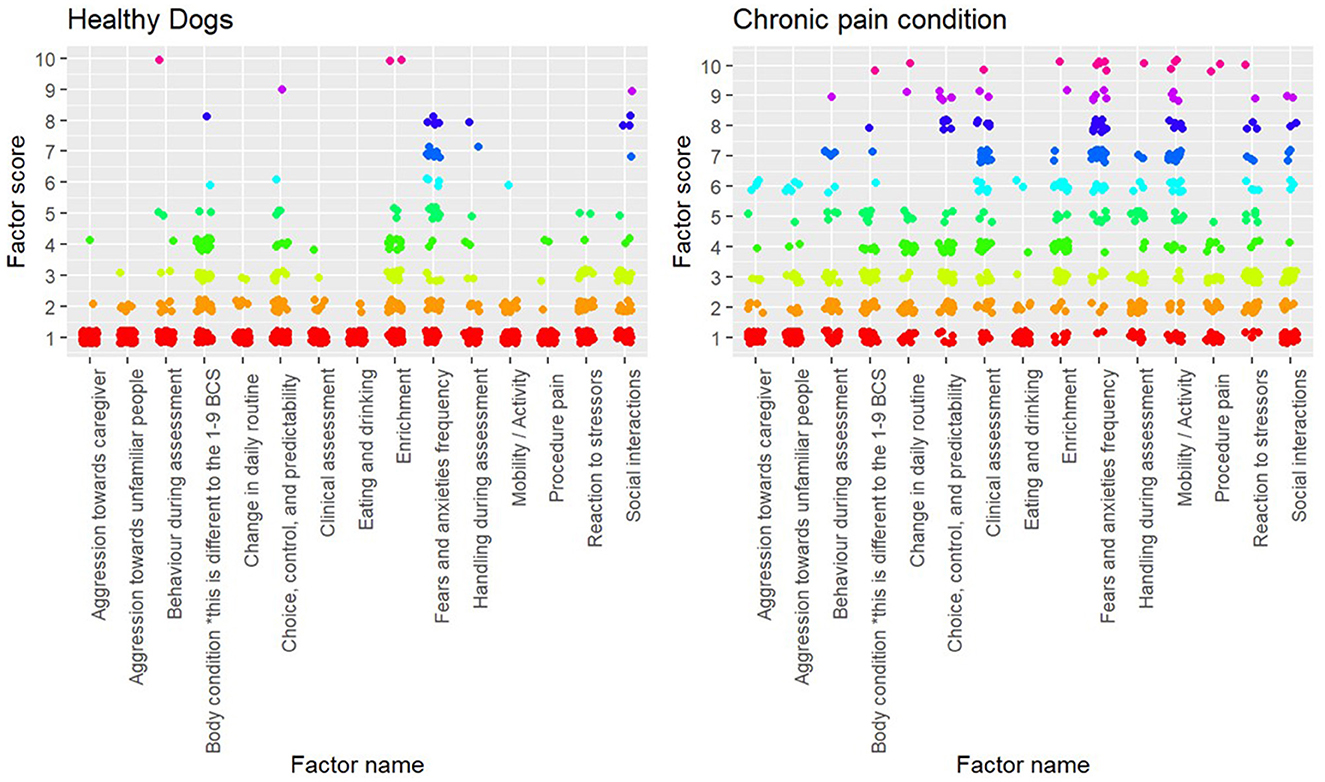
95% of researchers rate our articles as excellent or good
Learn more about the work of our research integrity team to safeguard the quality of each article we publish.
Find out more
CORRECTION article
Front. Vet. Sci. , 19 July 2024
Sec. Animal Behavior and Welfare
Volume 11 - 2024 | https://doi.org/10.3389/fvets.2024.1458084
This article is a correction to:
How does chronic pain impact the lives of dogs: an investigation of factors that are associated with pain using the Animal Welfare Assessment Grid
A corrigendum on
How does chronic pain impact the lives of dogs: an investigation of factors that are associated with pain using the Animal Welfare Assessment Grid
by Malkani, R., Paramasivam, S., and Wolfensohn, S. (2024). Front. Vet. Sci. 11:1374858. doi: 10.3389/fvets.2024.1374858
In the original article, there was a mistake in Figures 2, 3 as published. The term “chronic pain” in the figures was mislabeled as “behaviour”. The corrected versions of Figures 2, 3 appear below.

Figure 2. Plot of individual factor scores for each assessment (healthy, n = 143; chronic pain, n = 76).
The authors apologize for this error and state that this does not change the scientific conclusions of the article in any way. The original article has been updated.
All claims expressed in this article are solely those of the authors and do not necessarily represent those of their affiliated organizations, or those of the publisher, the editors and the reviewers. Any product that may be evaluated in this article, or claim that may be made by its manufacturer, is not guaranteed or endorsed by the publisher.
Keywords: dog, welfare assessment, quality of life, chronic pain, veterinary medicine
Citation: Malkani R, Paramasivam S and Wolfensohn S (2024) Corrigendum: How does chronic pain impact the lives of dogs: an investigation of factors that are associated with pain using the Animal Welfare Assessment Grid. Front. Vet. Sci. 11:1458084. doi: 10.3389/fvets.2024.1458084
Received: 01 July 2024; Accepted: 03 July 2024;
Published: 19 July 2024.
Approved by:
Frontiers Editorial Office, Frontiers Media SA, SwitzerlandCopyright © 2024 Malkani, Paramasivam and Wolfensohn. This is an open-access article distributed under the terms of the Creative Commons Attribution License (CC BY). The use, distribution or reproduction in other forums is permitted, provided the original author(s) and the copyright owner(s) are credited and that the original publication in this journal is cited, in accordance with accepted academic practice. No use, distribution or reproduction is permitted which does not comply with these terms.
*Correspondence: Rachel Malkani, ci5tYWxrYW5pQHN1cnJleS5hYy51aw==
Disclaimer: All claims expressed in this article are solely those of the authors and do not necessarily represent those of their affiliated organizations, or those of the publisher, the editors and the reviewers. Any product that may be evaluated in this article or claim that may be made by its manufacturer is not guaranteed or endorsed by the publisher.
Research integrity at Frontiers

Learn more about the work of our research integrity team to safeguard the quality of each article we publish.